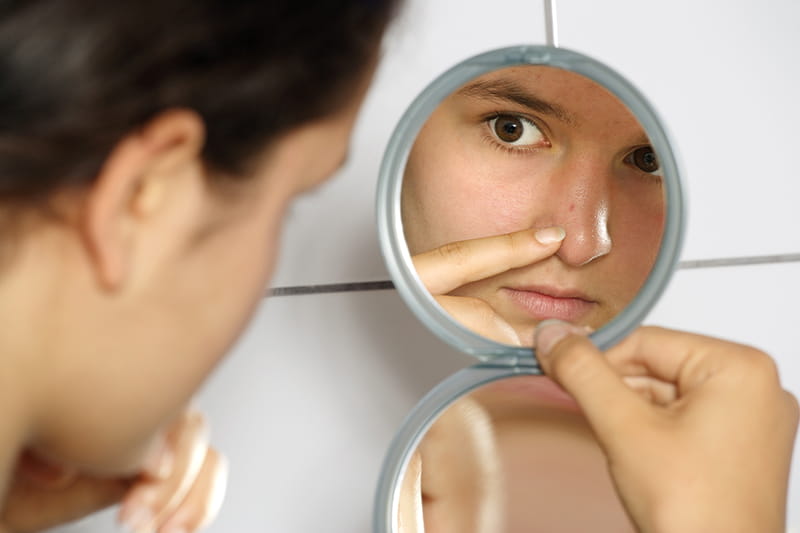Speaker- Vincenzo Bettoli
Acne scars represent a significant concern due to their global impact on individuals. Acne, classified as an inflammatory disease, can result in tissue damage through inflammatory processes. While some instances of tissue repair successfully restore the skin to its normal state, others culminate in the formation of scars. A review published in the Journal of the American Academy of Dermatology defines acne scarring as a consequence of perifollicular abscess rupture, which triggers a pathological healing response that produces either atrophic or hypertrophic scars. The wound healing process follows a structured sequence: initiation with injury, followed by coagulation, early and late inflammation, proliferation, and ultimately, scar remodeling, which can extend over a period of up to six months.
The formation of acne scars involves multiple factors, beginning with the rupture of the follicular wall, leading to abscess formation around the follicle. In certain cases, inadequate healing may result from further rupture and prolonged inflammation. Fibroblasts and metalloproteinases play crucial roles in this process, with metalloproteinases being primarily responsible for tissue degradation. A delicate balance between these enzymes and their inhibitors is essential for effective skin repair. Atrophic acne scars typically arise from deep skin damage. Additionally, "bridge scars," which are more prevalent in individuals with hidradenitis suppurativa, may also manifest in acne patients due to deep inflammation and skin contraction. Further contributing to scar formation are factors such as transforming growth factor-beta, which promotes extracellular matrix degradation while limiting keratinocyte proliferation. Moreover, inflammasomes, interleukin-2, interleukin-10, plasma cells, and B lymphocytes are integral to the complex molecular activities involved in scarring. Ultimately, atrophic scars are characterized by the destruction of sebaceous gland follicles.
A 2004 study conducted by Alison Leighton and Bill Cunliffe provided significant insights into the inflammatory processes associated with atrophic scar formation in patients with acne. The research revealed that individuals who develop atrophic scars typically experience prolonged inflammation, which progressively worsens over time. In contrast, those who heal without scarring tend to exhibit a brief yet intense inflammatory response that resolves quickly. This observation, derived from histological analyses, highlights the critical importance of early and aggressive treatment to prevent scarring. Furthermore, the study emphasized that delaying effective anti-inflammatory treatment for acne can result in more severe scarring, with an increasing number of scars forming over time. In the context of hypertrophic scars, the overexpression of transforming growth factor-beta 1 (TGF-β1) was identified as a key factor contributing to excessive collagen production, which leads to the subsequent development of scars. The study also addressed papular acne scars, though relatively uncommon, noting that these scars are characterized by perifollicular fibrosis and the destruction of elastic fibers, resulting in their raised appearance. Importantly, the authors stressed the need to address not only the active acne but also the post-inflammatory sequelae, including scarring, hyperpigmentation, and erythema. Patients often express concerns about these long-term consequences even while still managing active acne. Additionally, the study observed that scarring is often confluent, with multiple types of scars present, further complicating treatment efforts.
In terms of epidemiology, a significant study conducted by Alison Layton and colleagues, although not recent, offers an in-depth analysis of the characteristics of acne scars. This study, which surveyed 185 patients, reported that 95% developed facial scars, with equal prevalence between males and females. However, scars on the trunk were more commonly observed in males compared to females. Notably, only 22% of patients expressed concern regarding the aesthetic impact of their scars, with a higher frequency of concern reported among females. The study also demonstrated that similar acne lesions could result in different types of scars based on their anatomical location. Specifically, hypertrophic scars were found to be more frequent on the back, while atrophic scars were more prevalent on the face. Furthermore, several key risk factors for the development of acne scars were identified, including the duration and severity of acne, the time elapsed between the onset of acne and the initiation of effective treatment, and behaviours such as squeezing, picking, and relapse after treatment. These findings underscore the importance of timely intervention and effective management, including maintenance therapies to prevent relapse. In terms of odds ratios, the study found that severe acne was associated with a 3.6-fold increased risk of scarring. Other significant factors included a family history of acne scarring (2.1), duration of acne (1.63), and behaviours such as squeezing and picking (1.7). A study observed that acne scarring occurred at varying rates depending on acne severity, with 28% of cases involving IgA2 (Immunoglobulin A subclass 2), representing mild to moderate acne, 51% involving IgA3 (Immunoglobulin A subclass 3), and 77% involving IgA4 (Immunoglobulin A subclass 4). Although not all patients with severe acne developed scars, a significant majority did. Moreover, the study highlighted the profound impact of severe acne scars on patients' quality of life, with many experiencing psychological distress, including depression and, in some cases, suicidal ideation. These findings emphasize the necessity of early and effective treatment to minimize both the physical and emotional burdens associated with acne scarring. This study is widely recognized and frequently cited in the literature, reinforcing well-established clinical observations and underscoring the need for ongoing research in the field of acne scar prevention and management.
The morphology of acne scars represents a critical domain in dermatological research. A collaborative group of five researchers, driven by a collective interest in the understanding of scars, undertook a rigorous effort to achieve a clearer definition. However, they encountered significant challenges in reaching a consensus on a precise classification of acne scars, highlighting the complexity of this issue. Through their deliberations, the researchers established a classification framework wherein scars measuring less than two millimeters in depth were categorized as ice pick, scars ranging between two and four millimeters as moderate, and those exceeding four millimeters served as a reference point for clinical trials. This classification aims to facilitate meaningful data comparisons across various studies. An important insight from their investigation was the re-evaluation of the long-standing belief that atrophic acne scars are permanent. Utilizing advanced computer tracking methodologies, they observed that certain scars exhibited signs of regression over time, thereby challenging the prevailing notion that acne scars are immutable. In a subsequent longitudinal study involving 933 patients, researchers monitored the persistence of acne scars over a two-year period. The findings revealed that 81.7% of the scars remained present after this duration; however, 19.9% of the scars had resolved, indicating that a noteworthy proportion may naturally regress over time. Additionally, another study evaluated the efficacy of topical treatments through a split-face trial comparing a combination of benzoyl peroxide (2.5%) and adapalene (0.3%) against a placebo. This treatment was administered over a 24-week period, and to uphold the integrity of the trial, the entire process was video recorded. This precaution helped mitigate the potential for participants to improperly apply the product or interfere with the treatment protocol. Upon concluding the trial, the researchers analyzed the percentage change in the number of atrophic acne scars. The placebo group exhibited a 14% increase in scar prevalence, whereas the treatment group demonstrated a reduction of 15% after 24 weeks. Consequently, the authors concluded that the fixed combination of benzoyl peroxide and adapalene is effective in reducing the incidence of atrophic acne scars, offering valuable insights into therapeutic interventions for this condition.
Topical retinoids are recognized for their significant anti-inflammatory properties, which contribute to their efficacy in acne treatment. Specifically, Adapalene operates through Toll-like receptors, while Tretinoin modulates matrix metalloproteinases and their inhibitors. These mechanisms elucidate the rationale for the use of topical retinoids in managing inflammatory acne. Adapalene 0.3% has been shown to enhance collagen synthesis. Clinical studies indicate a reduction in atrophic scars among patients treated with Adapalene compared to those receiving a placebo. When patients transition from a placebo to an active treatment, a decrease in scar formation occurs, further underscoring the effectiveness of retinoids in managing atrophic acne scars. In a Phase 4 study evaluating Trifarotene, a reduction of 5.9% in atrophic scars was noted in the treatment group, while the placebo group experienced only a 2.7% reduction after 24 weeks. This highlights the therapeutic potential of Trifarotene in acne scar management.
Acne scars can develop independently of the severity of the underlying acne; however, they are more prevalent and severe in moderate to severe cases. Research suggests that approximately 20% of acne scars may resolve spontaneously. Several key risk factors contribute to the formation of acne scars, including the severity and duration of acne, a positive family history, and the interval between the onset of acne and the initiation of effective treatment. The psychological and aesthetic burden of untreated acne scars is substantial. Studies indicate that 94% of patients express dissatisfaction with available information on acne, with 44% specifically concerned about acne scars. Effective prevention strategies necessitate comprehensive assessments of family history, acne severity, and scar characteristics. The location of existing scars significantly affects a patient's quality of life, emphasizing the need for targeted interventions. Patient education regarding the inflammatory nature of acne and its relationship to scarring is crucial. Early intervention to reduce inflammation can enhance patient adherence to treatment regimens. Additionally, it is important to advise patients against manipulating lesions, as such behaviors may exacerbate inflammation and contribute to scar formation. Timely and effective management of inflammatory acne is essential, particularly in cases of severe acne. Topical retinoids play a vital role in reducing both the incidence and severity of acne scars, as evidenced by various studies involving agents such as Adapalene 0.3%, trifarotene and Tazarotene 0.1%, as well as specific fixed combinations. Moreover, the combination of isotretinoin with procedures such as laser treatments or chemical peels can be advantageous in preventing scarring, although caution should be exercised regarding the use of deep and ablative lasers
Emphasizing preventive measures can prove to be more effective than treating established scars, underscoring the necessity for proactive dermatological strategies.
Overall, a comprehensive approach that integrates both pharmacological treatment and adjunctive procedures is essential for minimizing the physical and emotional burdens associated with acne scarring.
33, European Academy of Dermatology and Venereology Congress, 25-28 September 2024, Amsterdam




